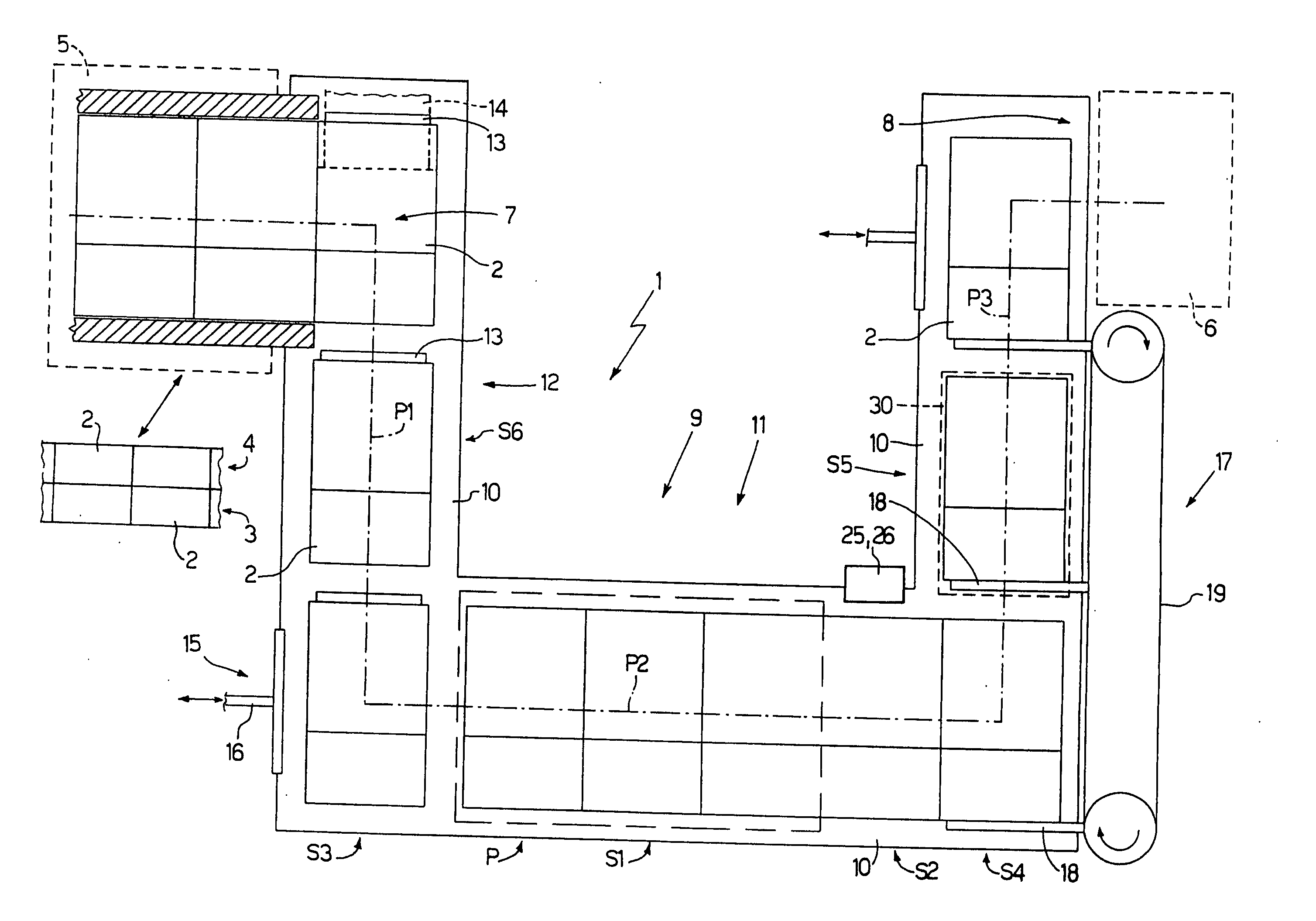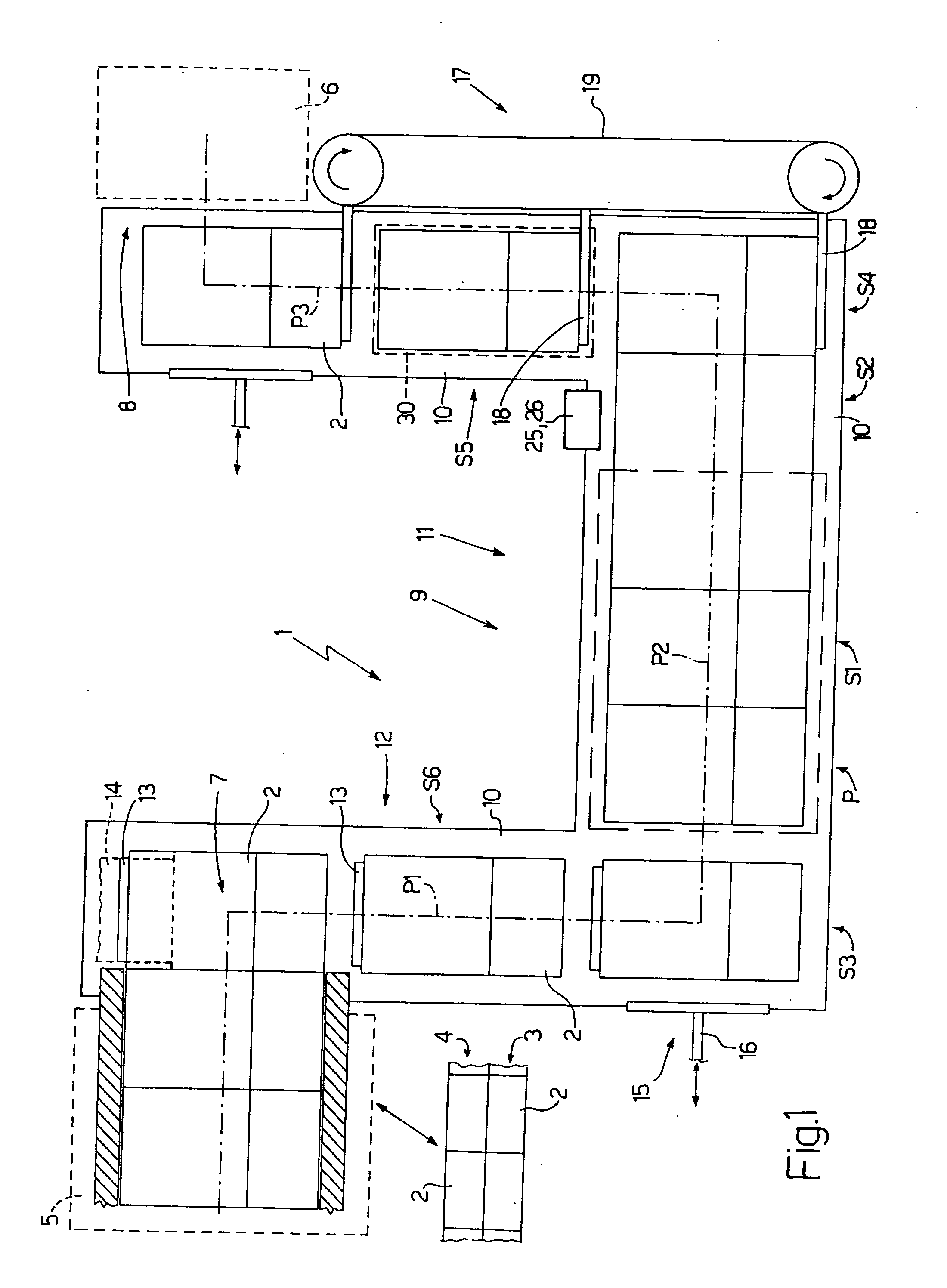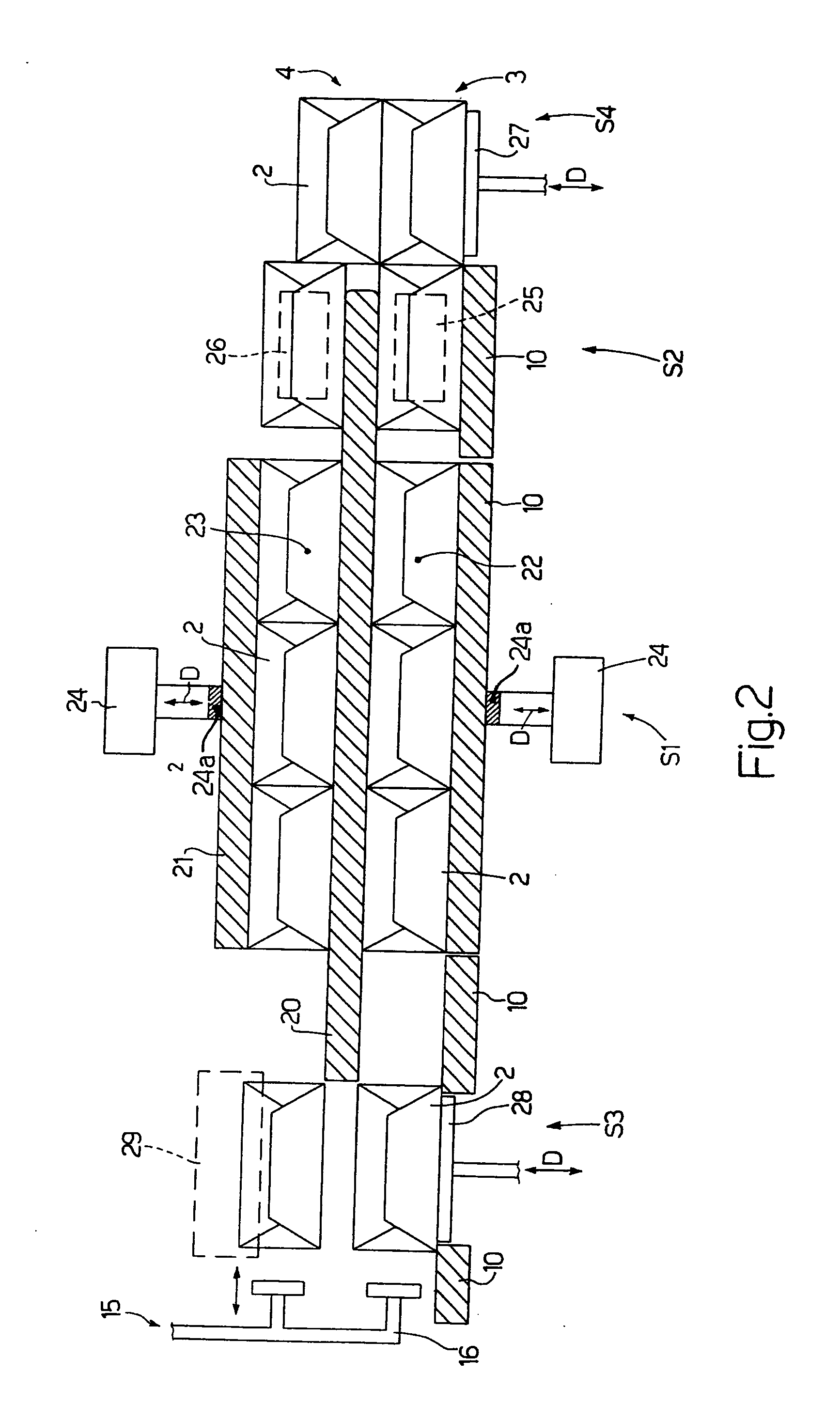Unit and method of feeding containers arranged in a number of superimposed rows
- Summary
- Abstract
- Description
- Claims
- Application Information
AI Technical Summary
Benefits of technology
Problems solved by technology
Method used
Image
Examples
Embodiment Construction
[0015] Number 1 in FIG. 1 indicates as a whole a feed unit for feeding containers or packets 2 of cigarettes arranged in two superimposed, respectively bottom and top, rows 3 and 4. Feed unit 1 forms part of a cigarette packing line comprising a cellophaning machine 5 for applying an overwrapping of transparent plastic material to packets 2 of cigarettes; and a cartoning machine 6 for producing cartons of packets 2 of cigarettes. More specifically, feed unit 1 is interposed between cellophaning machine 5 and cartoning machine 6, receives a succession of packets 2 of cigarettes from an output 7 of cellophaning machine 5, and transfers the succession of packets 2 of cigarettes to an input 8 of cartoning machine 6.
[0016] Feed unit 1 comprises a conveying device 9 for feeding packets 2 along a horizontal U-shaped path P extending from output 7 of cellophaning machine 5 to input 8 of cartoning machine 6. More specifically, path P comprises a linear start portion P1; a linear intermediat...
PUM
| Property | Measurement | Unit |
|---|---|---|
| Elasticity | aaaaa | aaaaa |
Abstract
Description
Claims
Application Information
 Login to View More
Login to View More - R&D
- Intellectual Property
- Life Sciences
- Materials
- Tech Scout
- Unparalleled Data Quality
- Higher Quality Content
- 60% Fewer Hallucinations
Browse by: Latest US Patents, China's latest patents, Technical Efficacy Thesaurus, Application Domain, Technology Topic, Popular Technical Reports.
© 2025 PatSnap. All rights reserved.Legal|Privacy policy|Modern Slavery Act Transparency Statement|Sitemap|About US| Contact US: help@patsnap.com



